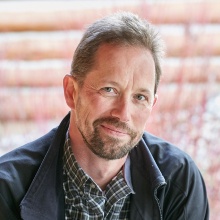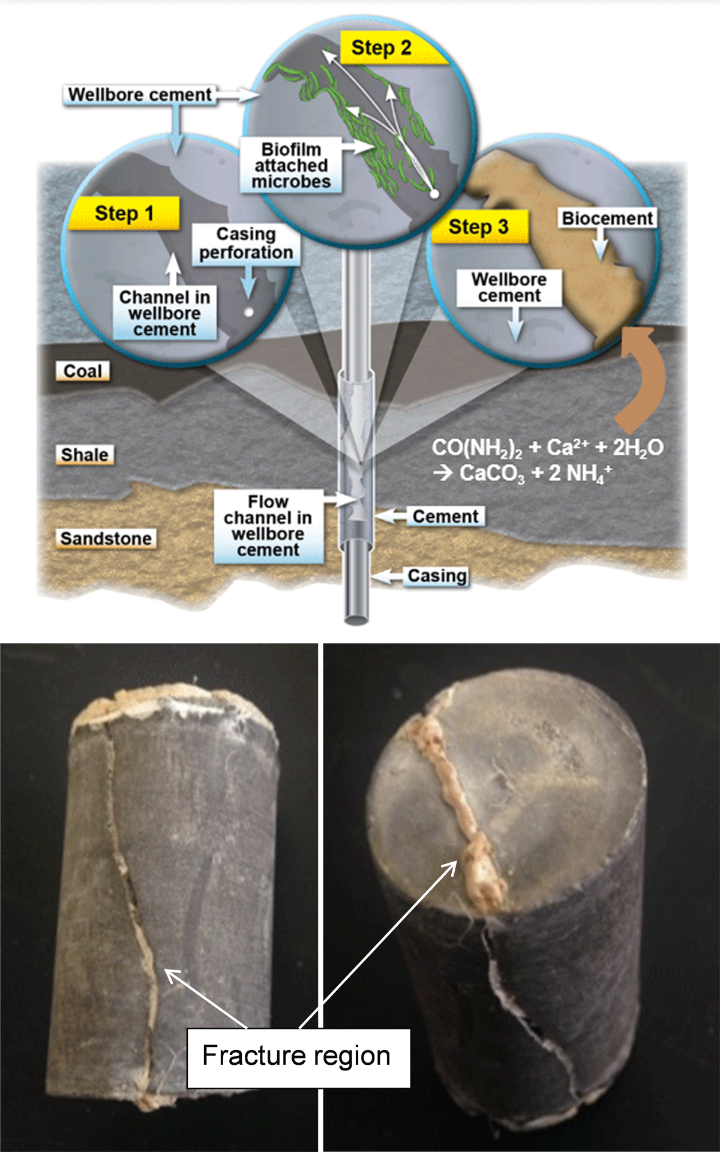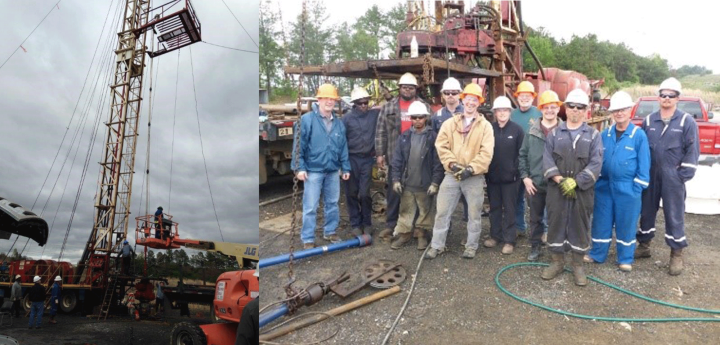We are pleased to announce that our SFB 1313 external partner Robin Gerlach, professor at the Montana State University (USA), will give the SFB 1313 "Pretty Porous Science Lecture" #32. His talk will be on "Using a combination of experimentation and modeling to develop a novel technology from the laboratory to the commercial scale" .
Date: Wednesday, 15 February 2023
Time: 4:00 pm CET
Speaker: Prof. Dr. Robin Gerlach, Montana State University (USA)
Lecture title: "Using a combination of experimentation and modeling to develop a novel technology from the laboratory to the commercial scale"
Place: Department of Hydromechanics and Modelling of Hydrosystems, Pfaffenwaldring 61, 70569 Stuttgart, Campus Vaihingen, Room: MML
Online registration: The talk will be a hybrid event. If you are interested in participating in the lecture online, please contact melanie.lipp@iws.uni-stuttgart.de
Abstract
Within approximately 4 years, a team at Montana State University, in collaboration with Schlumberger, Loudon Technical Services, Montana Emergent Technologies, the University of Stuttgart and others, completed five successful field-scale demonstrations of the ureolysis-induced calcium carbonate precipitation (UICP) technology to restore wellbore integrity. The field work along with the accompanying laboratory scale work and modeling allowed us to validate that engineered calcium carbonate precipitation can be used to seal fractures in the vicinity of wells and restore well integrity in compromised wellbore cement (i.e., leaky wells). UICP uses either the enzymatic or thermally induced hydrolysis of urea to increase the pH and carbonate alkalinity of aqueous solutions, thus promoting the precipitation of carbonate minerals (see equation in top image of Fig. 1). The resulting precipitates can accumulate in even very small aperture leakage pathways and form seals in situations, in which traditional ‘cement squeeze jobs’ have failed to form a reliable seal (see bottom image of Fig. 1). Hence, this technology can provide an alternative to cement-based sealing technologies. The first field-scale demonstration occurred in April 2014, and at the conclusion of 2022 a newly founded company, BioSqueeze®, had successfully sealed over 100 wells for 19 different well operators in seven states in the U.S. BioSqueeze® is scheduled to expand operations into Canada in early 2023.
This presentation will provide a summary of Montana State University’s research and development activities leading to successful commercial applications of this technology by providing an overview of our laboratory, field and mathematical modeling efforts, which were collaboratively conducted with the University of Stuttgart. Accompanying work occurred from the single-cell scale to meso-scale reactors, packed sand columns and core samples of up to 70 cm diameter operated at ambient and elevated pressures. Darcy-, pore network-, and pore-scale reactive transport models have been developed and have guided the experimental and field-scale efforts.
We have now developed biofilm and mineral precipitation strategies that can be engineered to manipulate the permeability and mechanical stability of porous and fractured media. We are in the process of engineering biofilm-induced mineral precipitation for the development of beneficial processes including bioremediation, soil stabilization, development of novel building materials, enhanced oil recovery, abatement of saltwater intrusion, enhanced geothermal energy production, and maintenance of well integrity.
Selected Publications
Weinhardt, Felix; Deng, Jingxuan; Hommel, Johannes; Vahid Dastjerdi, Samaneh; Steeb, Holger; Class, Holger (2022): Spatio-temporal distribution of precipitates and mineral phase transition during biomineralization affect porosity-permeability relationships - Microfluidic investigations. Transport in Porous Media. DOI: https://doi.org/10.1007/s11242-022-01782-8
Kirkland, C, Akyel, A., Hiebert, R, McCloskey, J, Kirksey, J, Cunningham, A, Gerlach, R, Spangler, L, Phillips, AJ. (2021): Ureolysis-induced calcium carbonate precipitation (UICP) in the presence of CO2-affected brine: A field demonstration. International Journal of Greenhouse Gas Control 109. 103391. DOI: 10.1016/j.ijggc.2021.103391
Zambare, N.M.; Naser, N.Y.; Gerlach, R.; Chang, C.B. (2020): Mineralogy of Microbially Induced Calcium Carbonate Precipitates Formed using Single Cell Drop-Based Microfluidics. Nature Scientific Reports. 10: 17535. DOI: s41598-020-73870-y
Feder, M.J.; Akyel, A.; Morasko, V.J.; Gerlach, R.; Phillips, A.J. (2020): Temperature-dependent inactivation and catalysis rates of plant-based ureases. Engineering Reports. DOI: 10.1002/eng2.12299
Kirkland, C, Hiebert, R, Hyatt, R, McCloskey, J, Kirksey, J, Thane, A, Cunningham, A, Gerlach, R, Spangler, L, Phillips, AJ. (2020): Direct Injection of Bio-mineralizing Agents to Restore Injectivity and Wellbore Integrity. SPE Production & Operations. DOI: 10.2118/203845-PA
Hommel, J.; Akyel, A.; Frieling, Z.; Phillips, A.J.; Cunningham, A.B.; Gerlach, R.; Class, H. (2020): A Numerical Model for Enzymatically Induced Calcium Carbonate Precipitation. Applied Sciences. 10(13), 4538. DOI: 10.3390/app10134538
Kirkland, C, Hiebert, R, Hyatt, R, McCloskey, J, Thane, A, Cunningham, A, Gerlach, R, Kirksey, J, Spangler, L, Phillips, AJ. (2020): Addressing wellbore integrity and thief zone permeability using microbially-induced calcium carbonate precipitation (MICP): A field demonstration. Journal of Petroleum Science and Engineering. 190, 107060. DOI: 10.1016/j.petrol.2020.107060
Kirkland, C.; Norton, D.; Firth, O.; Eldring, J.; Cunningham, A. B.; Gerlach, R.; Phillips, A. J. (2019): Visualizing MICP with X-ray µ-CT to enhance cement defect sealing. International Journal of Greenhouse Gas Control. 86:93-100. DOI: 10.1016/j.ijggc.2019.04.019
Zambare, Neerja; Lauchnor, Ellen; Gerlach, Robin (2019): Controlling the Distribution of Microbially Precipitated Calcium Carbonate in Radial Flow Environments. Environmental Science and Technology. DOI: 10.1021/acs.est.8b06876
Mitchell, A.C.; Espinosa-Ortiz, E.J.; Parks, S.L.; Phillips, A.J.; Cunningham, A.B.; Gerlach, R. (2019): Kinetics of calcite precipitation by ureolytic bacteria under aerobic and anaerobic conditions. Biogeosciences. Accepted April 17, 2019. DOI: 10.5194/bg-16-2147-2019.
Cunningham, A., Class, H., Ebigbo, A., Gerlach, R., Phillips, A.J., Hommel, J. (2018): Field-scale modeling of microbially induced calcite precipitation. Computational Geosciences. 23(2):399-414. DOI: 10.1007/s10596-018-9797-6
Phillips, A. J.; Troyer, E.; Hiebert, R.; Kirkland, C.; Gerlach, R.; Cunningham, A. B.; Spangler, L.; Kirksey, J.; Rowe, W.; Esposito, R. (2018). Enhancing wellbore cement integrity with microbially induced calcite precipitation (MICP): A field scale demonstration. Journal of Petroleum Science and Engineering 171: 1141-1148. 10.1016/j.petrol.2018.08.012
Bray, J.; Lauchnor, E.; Redden, G.; Gerlach, R.; Fujita, Y.; Codd, S.; Seymour, J. (2017): Impact of mineral precipitation on flow and mixing in porous media determined by microcomputed tomography and MRI. Environmental Science and Technology. 51(3):1562–1569. DOI: 10.1021/acs.est.6b02999.
Hommel, J.; Ebigbo, A.; Gerlach, R.; Cunningham, A.B.; Helmig, R.; Class, H. (2016). Finding a Balance between Accuracy and Effort for Modeling Biomineralization. Energy Procedia 97: 379-386. DOI: j.egypro.2016.10.028
Phillips, A.J., Cunningham, A.B., Gerlach, R., Hiebert, R., Hwang, C., Lomans, B.P., Westrich, J., Mantilla, C., Kirksey, J., Esposito, R., Spangler, L. (2016): Fracture Sealing with Microbially-Induced Calcium Carbonate Precipitation: A Field Study. Environmental Science and Technology. 50(7):4111–4117. DOI: 10.1021/acs.est.5b05559
Hommel, J.; Lauchnor, E.; Gerlach, R.; Cunningham, A.B.; Ebigbo, A.; Helmig, R.; Class, H. (2015): Investigating the influence of the initial biomass distribution and injection strategies on biofilm-mediated calcite precipitation in porous media. Transport in Porous Media. 1-23. DOI: 10.1007/s11242-015-0617-3
Connolly, J.M.; Jackson, B.; Rothman, A.P.; Klapper, I.; Gerlach, R. (2015): Estimation of a biofilm-specific reaction rate: Kinetics of bacterial urea hydrolysis in a biofilm. npj Biofilms and Microbiomes. 1, 15014; doi:10.1038/npjbiofilms.2015.14
Hommel, J.; Lauchnor, E.; Phillips, A.J.; Gerlach, R.; Cunningham, A.B.; Helmig, R.; Ebigbo, A.; Class, H. (2015): A revised model for microbially induced calcite precipitation - improvements and new insights based on recent experiments. Water Resources Research. 51(5):3695–3715. doi:10.1002/2014WR016503
Phillips, A.J.; Gerlach, R.; Lauchnor, E.; Mitchell, A.C.; Cunningham, A.B.; Spangler, L. (2013): Engineered applications of ureolytic biomineralization: a review. Biofouling. 29(6): p. 715-733. DOI: 10.1080/08927014.2013.796550

Robin Gerlach
Prof. Dr.External Partner, Research Project C04




